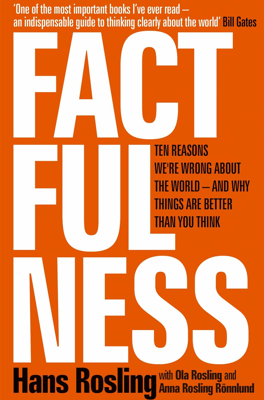The Fear Instinct
A Dramatic Misjudgment
On an ordinary day in 1975, Hans Rosling, as a young doctor, faced a critical situation that challenged his perceptions under stress. When a Swedish military pilot crashed, Rosling, initially alone, mistakenly feared a Russian attack due to the pilot’s semi-coherent Russian-like mutterings and the appearance of his suit. This fueled an instinctual narrative of wartime attack, compounded by a high-stress environment. This situation underscored how fear can skew rational thinking and perception.
The Attention Filter
Humans process information through an "attention filter," which highlights dramatic and fear-inducing stories, often at the expense of routine or positive information. Media plays into this by focusing on stories that stir emotions and drama, neglecting the mundane or ongoing positives like declining malaria rates or predictable weather. This bias towards dramatic content reinforces and sustains our worst fears about the world.
Patterns of Fear
Common fears, such as those involving animals, heights, or closed spaces, originate from evolutionary instincts designed to protect humans from harm. In modern settings, these fears often do more harm than good, distorting perceptions of danger and leading to irrational responses. For instance, Rosling points out that media disproportionately covers violent or catastrophic events, reinforcing an exaggerated sense of global peril.
Misinterpretations and Overreactions
In his interactions with a traditional midwife in Tanzania, Rosling illustrates how fears can be contextually misapplied. The midwife desired simple tools like a flashlight to avoid snakes, a realistic fear on Level 1 of global income but potentially an overblown fear on Level 4. This dissonance showcases how developed regions sometimes harbor exaggerated fears about threats that are minimal or managed effectively in their environments.
Systemic Distortion of Fear
Fear can significantly distort our worldview. Rosling uses several examples to highlight this: - The fear of nuclear war during his childhood, which never materialized but dominated public consciousness. - Coverage of natural disasters, which despite causing less mortality now compared to the past, still receive hyperbolic media attention. - The effectiveness of historical responses to potential disasters, like the international coordination following aviation accidents, which dramatically improved flight safety.
Rosling criticizes the imbalance in coverage and awareness, noting that while some threats receive disproportionate attention (like terrorism), others that cause more widespread harm (like diarrheal diseases) are relatively ignored.
Balancing Fear with Reality
In a world less threatened by immediate physical dangers, many of the instinctual fears people cling to are outdated and non-adaptive. Rosling argues that recognizing the misalignment between fear and actual danger can lead to more rational responses and a better allocation of resources to address real-world problems more effectively. He advocates for a fact-based understanding of the world to better prioritize and respond to risks, emphasizing the distinction between perceived and real risks.
Factfulness in this context means understanding that our focus on frightening events does not necessarily align with actual risks or dangers, and adjusting our perceptions and actions accordingly. This rational approach seeks to allocate our emotional and physical responses more appropriately, ensuring we address the most critical issues with the appropriate level of concern and resources.
